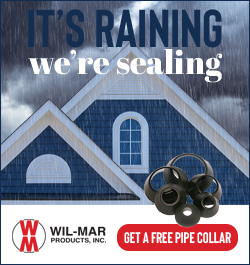Cushion the Supply Chain Blow With These Sealant Technology Swaps

By Colin Sheehan, RCS Reporter.
Can’t find the sealant brand you typically use? Depending on the situation, you may be able to swap it with a different technology for the same outcome.
Supply chain disruptions can be stressful to endure as they cause contractors to use different materials than what is preferred. While most contractors choose to spend more on the same technology offered from a different brand than risk using a lower quality product, there are several sealant technology “swaps” that you can make for similar performance outcomes.
This technical bulletin offered by Sashco provides an in-depth outline of the various substitutions, detailing the differences between the technologies and the outcomes you can expect from each. This article provides a summary of the three sealant technology swaps detailed in the bulletin that contractors can make in times of supply chain disruptions.
1 – Urethanes with acrylics
Urethanes and high-performance acrylics are similar in that both are paintable and meet the specification ASTM C920 for joint movement capability.
One thing to consider when switching from acrylic to urethane is moisture sensitivity. Urethane is the most moisture sensitive of reactive sealant products and should not be applied to damp surfaces.
2 – Silicones with copolymers
Noting that each brand varies in quality and performance, these moisture resistant products make excellent swaps as they have the following similarities:
-
Superior clarity compared to most other sealant technologies.
-
Great adhesion to more difficult surfaces like aluminum, glass and tile.
They do have one crucial difference between them, which is their paint-ability. Silicone can’t be painted whereas copolymer can.
3 – Hybrids with either acrylics or copolymers
Sometimes referred to as MS polymers, hybrids exist somewhere in between urethanes and silicones. They can be painted, have great chemical resistance, are highly flexible and elastic. Depending on the situation, they can be swapped with high performance acrylics or copolymer rubbers.
On the other side, when switching from either an acrylic or copolymer to a hybrid, look out for poor UV resistance as hybrids are known to turn yellow quickly when exposed to long periods of sunlight.
Download the technical bulletin to learn more about sealant technology swaps you can make to keep your business moving.
Learn more about Sashco in their RoofersCoffeeShop® Directory or visit www.sashco.com.



















Comments
Leave a Reply
Have an account? Login to leave a comment!
Sign In